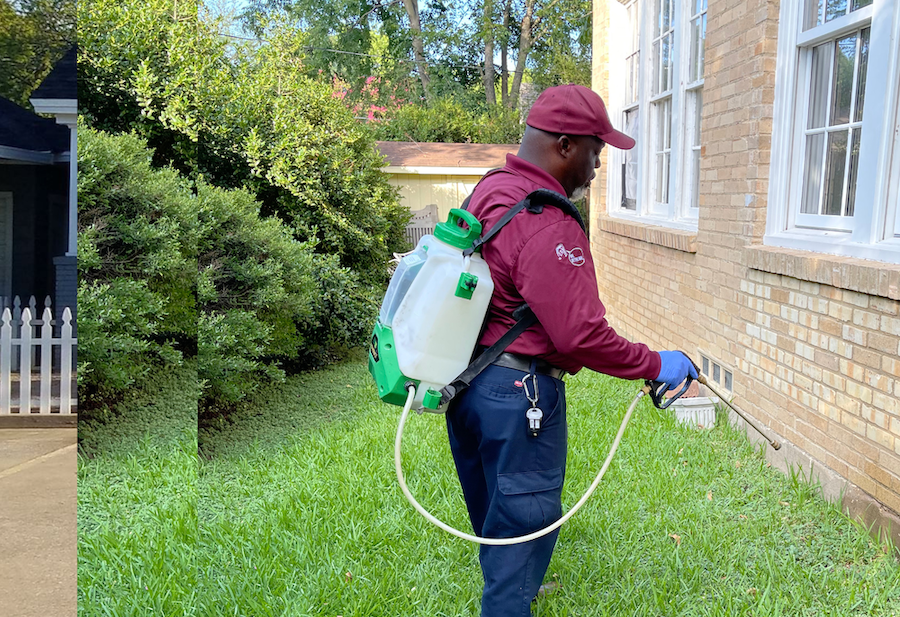Keep your home safe with Pest Control and avoid future infestations.
Eco-Friendly Bug Control Approaches for Taking Care Of Wildlife in Urban Areas
Urban areas usually find themselves at the junction of human task and wildlife, leading to distinct obstacles in insect administration. These strategies not only safeguard the atmosphere yet additionally enhance neighborhood involvement in wildlife administration. As city populaces continue to expand, understanding the characteristics of wildlife communications ends up being significantly vital.
Comprehending Urban Wild Animals Dynamics
Recognizing Urban Wildlife Dynamics is essential for creating efficient and environment-friendly insect control approaches. Urban areas are significantly coming to be habitats for numerous wild animals types, driven by aspects such as environment fragmentation, food schedule, and human encroachment. Acknowledging these characteristics enables a nuanced approach to pest monitoring that lines up with eco-friendly principles.
Urban wildlife frequently includes types such as raccoons, squirrels, and birds, which adjust to city environments, discovering particular niches in eco-friendly spaces, parks, and also houses. Their existence can bring about conflicts with human beings, particularly when they make use of human sources for food and shelter. Recognizing the habits and eco-friendly functions of these species informs techniques that lessen adverse communications while promoting biodiversity.
Additionally, recognizing the interdependencies within metropolitan environments assists in identifying critical areas for habitat conservation and restoration. This expertise adds to the development of incorporated parasite monitoring (IPM) methods that consider the environmental equilibrium, thus minimizing dependence on dangerous chemicals. By cultivating coexistence between human beings and city wildlife, cities can develop much healthier environments that benefit both homeowners and local environments, leading the means for lasting city living.
Natural Repellents and Deterrents
Natural repellents and deterrents use a sustainable option to traditional bug control techniques by harnessing the power of nature to keep undesirable species at bay. These environment-friendly options typically make use of plant-based components, essential oils, and other normally taking place substances that discourage pests without damaging the setting.
One efficient natural repellent is peppermint oil, which is known to push back rodents and insects. Its solid aroma is unpleasant to many pests, making it a preferred option for urban setups. Similarly, vinegar and citrus peels can act as deterrents, as their strong smells are usually unattractive to numerous wild animals.
In addition, diatomaceous earth is an all-natural powder that can be spread out in areas prone to insect activity, properly dehydrating and discouraging pests without posturing threats to non-target types. Garlic sprays and neem oil are recognized for their capacity to drive away a vast range of insects, consisting of both bugs and bigger wildlife.
Implementing these all-natural repellents not only lowers dependence on chemical pesticides yet additionally advertises a healthier urban ecological community, cultivating a more well balanced conjunction in between people and wild animals. By making use of these methods, city areas can successfully manage insect populaces while decreasing environmental effect.
Environment Alteration Methods
Reliable habitat adjustment strategies play an important duty in lasting bug monitoring by altering the environment to make it less for pest infestations. By comprehending the environmental dynamics of urban areas, residential or commercial property proprietors can carry out calculated adjustments that deter insects while advertising biodiversity.
(Silverfish control Port Charlotte)One primary technique entails maintaining proper sanitation. This includes normal waste elimination, securing trash can, and getting rid of standing water to decrease breeding websites for bugs and rats. Additionally, landscaping practices such as choosing indigenous plants can improve environmental balance, giving habitats for advantageous organisms while reducing resources for parasites.
Another crucial technique is to seal entry factors in buildings. Inspecting and fixing fractures in foundations, walls, and home windows can dramatically lower parasite access. Producing physical barriers, such as fences or plant barriers, can prevent wildlife motion right into human-inhabited locations.
Integrated Insect Administration Practices
Structure upon habitat alteration techniques, integrated pest monitoring (IPM) methods offer an all natural method to controlling pest populations while lessening environmental impact. IPM combines different strategies, a fantastic read consisting of biological, social, mechanical, and chemical controls, to accomplish reliable bug administration.
Organic control entails the intro of all-natural killers or bloodsuckers to lower insect populaces. Social practices, such as plant turning and cleanliness, disrupt pest life process and reduce their habitats - Pest Control. Mechanical controls, like traps and barriers, supply prompt remedy for insect stress without chemical treatment
Chemical controls are used as a last resource, focusing on targeted applications that restrict injury to non-target types and the environment. The option of eco-friendly chemicals, when necessary, is important to the IPM structure. Additionally, checking bug populaces and assessing possible damage helps notify decision-making, making certain that treatments are prompt and effective.
Area Involvement and Education And Learning

(Flea control Port Charlotte)Workshops and informative sessions can furnish citizens with expertise regarding native varieties, habitat conservation, and efficient safe bug monitoring methods. Partnership with colleges, neighborhood organizations, and government firms better improves academic outreach, ensuring that essential details reaches varied audiences.
Additionally, community-led campaigns, such as area clean-up days and environment reconstruction jobs, not just promote biodiversity but also enhance community connections. Pest control service. By urging citizens to share their experiences and observations, neighborhoods can establish targeted methods that deal with details regional insect problems
Incorporating feedback from homeowners right into pest monitoring intends allows a more responsive and adaptive approach to wildlife difficulties. Eventually, notified and involved neighborhoods are vital to achieving long-term success in environment-friendly insect control, resulting in healthier metropolitan settings that value both human and environmental needs.

Final Thought
In verdict, environment-friendly pest control approaches offer lasting solutions for taking care of city wildlife. By prioritizing habitat alteration, using all-natural repellents, and applying integrated pest monitoring techniques, communities can foster a harmonious coexistence with local fauna.